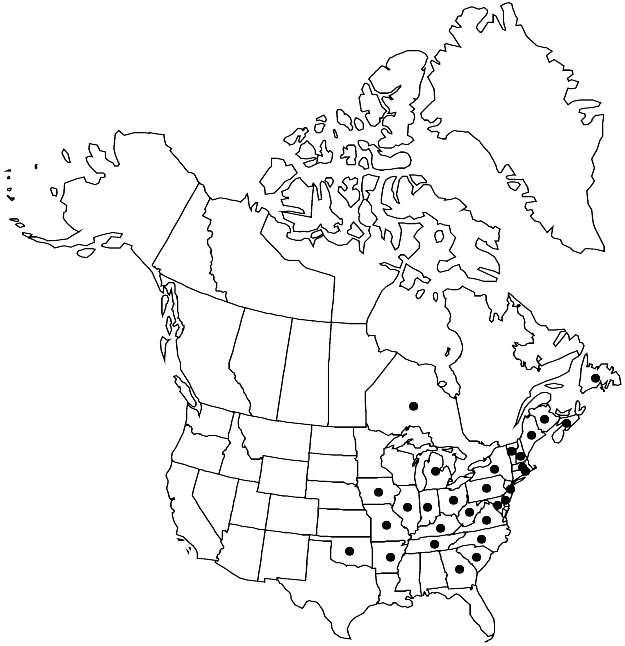Orthotrichum stellatum
Bryol. Univ. 1: 274. 1826.
Plants 0.3–0.8 cm. Stem-leaves stiff, loosely erect-appressed when dry, lanceolate to oblong-lanceolate, 1.8–2.2 mm; margins recurved to just below apex, entire; apex narrowly obtuse to bluntly acute, not incurved when dry; basal laminal cells rectangular, walls thin, nodose toward costa; distal cells 8–13 µm, 1-stratose, lumina irregular due to uneven wall thickenings, smooth or papillae 1–3 per cell, conic, small. Specialized asexual reproduction by gemmae on abaxial surface of leaves. Sexual condition gonioautoicous. Vaginula with hairs absent. Seta 0.4–1 mm. Capsule emergent, oblong-cylindric and strangulate when dry, 0.4–1 mm, 8-ribbed when dry, ribs thick, broad, strongly constricted below mouth; stomata immersed, mid capsule, 1/2 to completely covered by subsidiary-cells, cells projecting horizontally over stomata, inner walls thickened; peristome double; prostome absent; exostome teeth 8, reflexed, finely and evenly papillose; endostome segments 8, well developed, of 1 or 2 rows of cells, smooth. Calyptra oblong, smooth, naked or sparsely hairy, hairs smooth. Spores 13–18 µm.
Habitat: Hardwood trunks in moist forests, with Orthotrichum ohioense in mesic, shaded stream edges
Elevation: low to moderate elevations (10-1000 m)
Distribution

N.B., Nfld. and Labr. (Nfld.), N.S., Ont., Ark., Del., Ga., Ill., Ind., Iowa, Ky., Maine, Md., Mass., Mich., Mo., N.H., N.J., N.Y., N.C., Ohio, Okla., Pa., R.I., S.C., Tenn., Vt., Va., W.Va.
Discussion
Orthotrichum stellatum is distinguished by the strongly ribbed, strangulate capsules with well-developed endostomes of eight segments. In comparison, O. ohioense has weakly ribbed capsules that are not constricted below the mouth and an endostome that is lacking or rudimentary. From O. pumilum, the narrowly lanceolate leaves and small laminal cells with unevenly incrassate walls differentiate O. stellatum.
Selected References
None.
Lower Taxa
"broad" is not a number. "thick" is not a number.